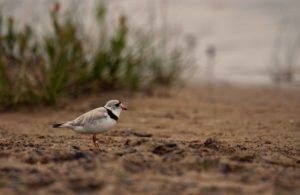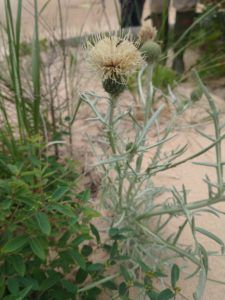Under-SAND-ing Michigan’s Dune Habitats

A Piping Plover
Michigan is home to the world’s largest collection of freshwater sand dunes, many of which are located in our parks. When you look at a dune you may only think of sand, but that is not entirely true! Dunes need vegetation to help hold sand in place so you will often find grasses and shrubs dotted across the habitat. As it gets further inland, you will often find various conifer tree species like our white and red pine, which can survive in nutrient-poor soil. You will be surprised to learn that there are four distinct dune types in Michigan: parabolic, perched, linear, and transverse. The most common we see are linear or wooded dunes, which form semi-straight lines. These dunes have “zones” which have their own unique plant and animal community.

Pitchers Thistle
In some of these zones exist some of our most critically endangered and threatened species. Species such as the Piping Plover, Pitchers Thistle, and Houghton’s Goldenrod all call dune habitats their home. Major threats to dune habitats include off-road vehicles, recreational overuse, residential development, sand mining, and invasive plants and animals. All these issues remove the natural vegetation holding the sand together, allowing the sand to erode away at a faster pace than normal.
It is extremely important to keep our sand dune habitats intact not only for our wildlife but also to keep Michigan’s natural beauty intact. On August 16 th -18 th, I will be attending a training session offered by Huron Pines in Alpena on dune restoration, coastal conservation, and invasive removal. I hope that I can take a lot out of this training to help protect our freshwater sand dunes so the coming generations can enjoy them as I have.
The post Under-SAND-ing Michigan’s Dune Habitats appeared first on Michigan United Conservation Clubs.



